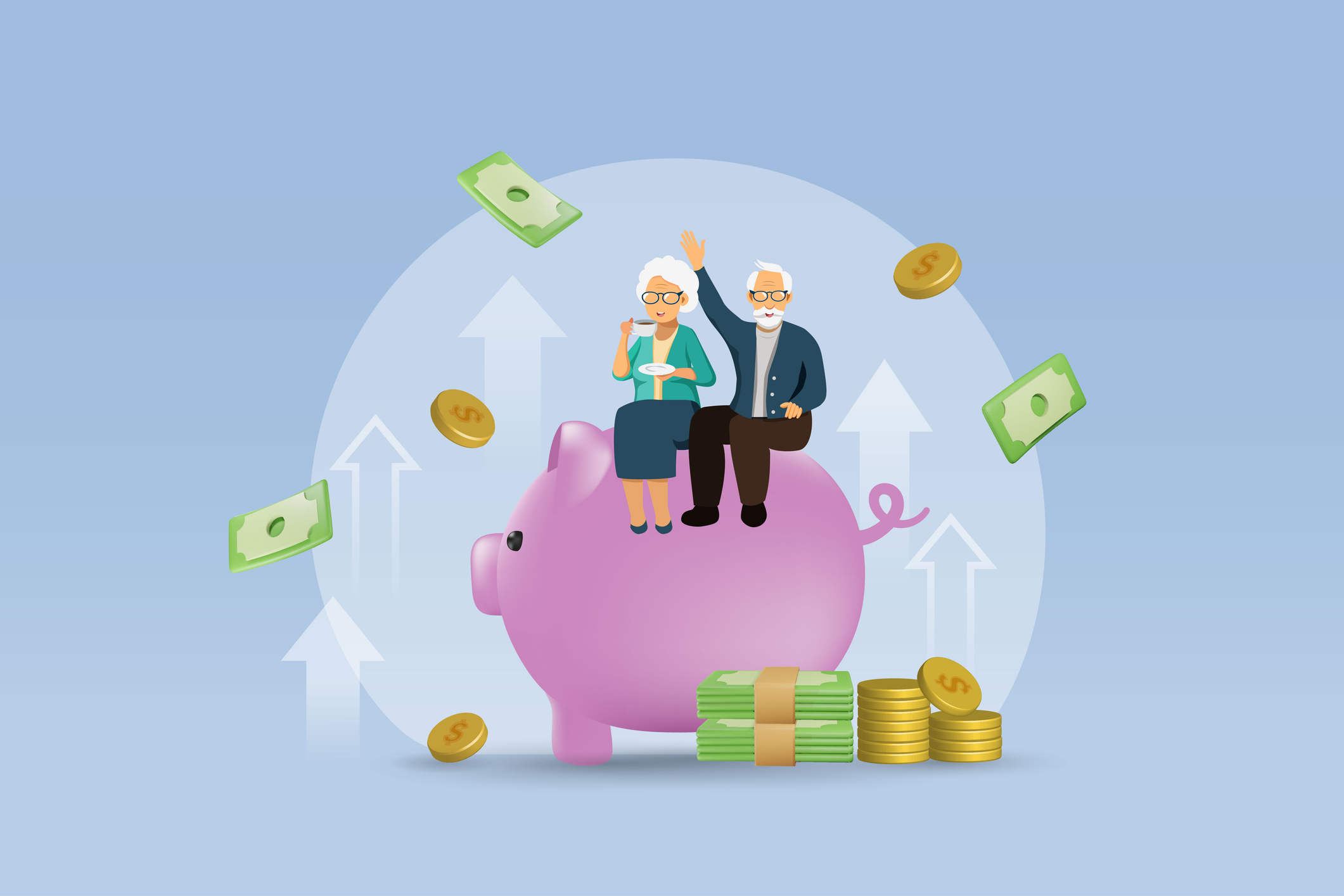CD vs. High-Yield Savings Account: Which is Better?
Deciding between a CD vs. high-yield savings account? Here's how to choose based on your savings goals.

Erin Bendig
If you're looking for a place to store and grow your savings, you have multiple options. Two popular choices are certificates of deposit and high-yield savings accounts.
Both offer you rates that outpace inflation. Outside of that, they do have distinct differences you'll want to keep in mind when choosing which one works best for your needs.
With these things in mind, we'll take a look at the features of each and what to consider before signing up. That way, you find the right one to grow your savings.
When to choose a CD
A certificate of deposit (CD) is a type of savings account that holds a set amount of money for a fixed period, ranging anywhere from 3 months to 5 years. Unlike high-yield savings accounts, you won’t be able to withdraw cash from a CD before its maturity date. Doing so will result in fees that can offset any interest earned (unless you have a no-penalty CD account).
Usually, CD rates are much higher than rates on traditional savings accounts from brick-and-mortar banks, and in many cases, some of the best CD rates on the market feature an APY of over 4%. Another notable aspect of CDs is that interest rates are locked in when opening a CD account, meaning if the Federal Reserve decides to cut interest rates this fall, it won't impact your term.
Not only should you compare interest rates before opening a CD, but you should also consider any early withdrawal penalties, fees and minimum balance requirements associated with the account, along with the amount of time you’re comfortable locking your cash away.
Because your money is locked away for a fixed time, CD accounts aren't good options for cash you may need quick access to, like money in an emergency fund. What CD accounts are good for is saving for a particular goal, such as a future purchase, like a new car, or an event, like a wedding.
For example, if you know you’re going to buy a car in three years, opening a three-year CD can help build your savings with minimal effort, thanks to compound interest, and also help you resist the temptation to spend your cash.
CDs offer a fixed, predictable rate of return on your savings. Our savings calculator tool can help you determine just how much you’ll earn in compound interest once your CD reaches maturity.
When to choose a high-yield savings account
A high-yield savings account functions in the same way as a traditional savings account, but with one main difference: High-yield savings accounts pay a higher-than-average APY on deposits.
In fact, many of the best high-yield savings accounts offer well over 4%. However, unlike CDs, rates on high-yield savings accounts are not fixed, meaning if the Fed cuts rates in the future, your savings rate will drop too.
As with CDs, before opening a high-yield savings account, be sure to review any fees or balance requirements associated with the account.
You can shop around and find the right account quickly, using this Bankrate tool:
There’s no term length with a high-yield savings account, as funds in the account are readily accessible. Unlike CDs, you won’t be charged a fee for withdrawing your cash.
Because of this, high-yield savings accounts are better suited towards savers who want quick access to their money, should an emergency arise.
And they're convenient for savers looking to add regular deposits. You can set up automatic transfers from your checking account to your savings to meet future goals.
Bottom line on CD vs. high-yield savings accounts
Both options help you grow your money and outpace inflation.
CDs work best if you can put aside a portion of your money and not touch it for a specified time. They're also wise choices for savers looking to lock in a high rate if the Fed cuts rates this fall.
Meanwhile, high-yield savings accounts work better for people who want to earn a high rate of return, but also want quick access to their cash. In either case, make sure to shop around to find the best rates, and pay close attention to any fees associated with the account.
Related Content
Profit and prosper with the best of Kiplinger's advice on investing, taxes, retirement, personal finance and much more. Delivered daily. Enter your email in the box and click Sign Me Up.

Sean is a veteran personal finance writer, with over 10 years of experience. He's written finance guides on insurance, savings, travel and more for CNET, Bankrate and GOBankingRates.
- Erin BendigPersonal Finance Writer
-
 Don't Wait Until January: Your Year-End Health Checklist to Kickstart 2026
Don't Wait Until January: Your Year-End Health Checklist to Kickstart 2026Skip the fleeting resolutions and start the new year with a proactive plan to optimize your longevity, cognitive health, and social vitality.
-
 Premium Rewards Cards: More Perks, Higher Fees
Premium Rewards Cards: More Perks, Higher FeesSome issuers are hiking the annual fee on their flagship luxury credit cards by hundreds of dollars. Are they still worth using?
-
 3 Trips to Escape the Winter Doldrums, Including An Epic Cruise
3 Trips to Escape the Winter Doldrums, Including An Epic CruiseThree winter vacation ideas to suit different types of travelers.
-
 Premium Rewards Cards: More Perks, Higher Fees
Premium Rewards Cards: More Perks, Higher FeesSome issuers are hiking the annual fee on their flagship luxury credit cards by hundreds of dollars. Are they still worth using?
-
 3 Trips to Escape the Winter Doldrums, Including An Epic Cruise
3 Trips to Escape the Winter Doldrums, Including An Epic CruiseThree winter vacation ideas to suit different types of travelers.
-
 4 Financially Savvy Things to Do with Unwanted Gifts
4 Financially Savvy Things to Do with Unwanted GiftsDon't send that unwanted gift to the landfill. Find a way to squeeze out some of its cash value instead.
-
 I'm an Insurance Expert: Sure, There's Always Tomorrow to Report Your Claim, But Procrastination Could Cost You
I'm an Insurance Expert: Sure, There's Always Tomorrow to Report Your Claim, But Procrastination Could Cost YouThe longer you wait to file an insurance claim, the bigger the problem could get — and the more leverage you're giving your insurer to deny it.
-
 How to Leave Different Amounts to Adult Children Without Causing a Rift
How to Leave Different Amounts to Adult Children Without Causing a RiftHere’s how to leave different amounts to adult children without causing a family rift.
-
 Introducing Your CD's Edgier Cousin: The Market-Linked CD
Introducing Your CD's Edgier Cousin: The Market-Linked CDTraditional CDs are a safe option for savers, but they don't always beat inflation. Should you try their counterparts, market-linked CDs, for better returns?
-
 How to Protect Yourself and Others From a Troubled Adult Child: A Lesson from Real Life
How to Protect Yourself and Others From a Troubled Adult Child: A Lesson from Real LifeThis case of a violent adult son whose parents are in denial is an example of the extreme risks some parents face if they neglect essential safety precautions.
-
 Here's How Much You Can Earn with a $100,000 Jumbo CD
Here's How Much You Can Earn with a $100,000 Jumbo CDYou might be surprised at how fast a jumbo CD helps you reach your goals.